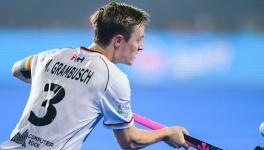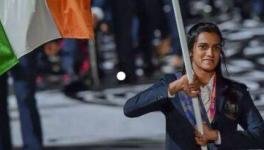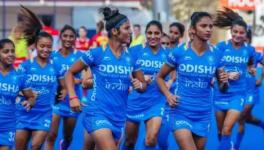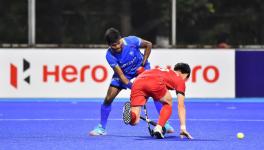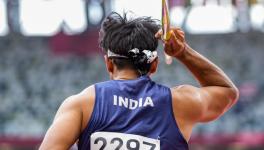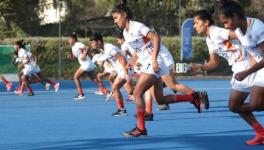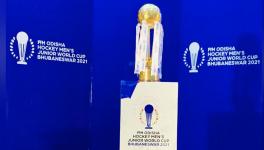The Good, Bad and Ugly of India’s Asia Cup Campaign
That India is the best team in Asia, is a fact. And this has nothing to do with recent triumphs. Barring a few exceptions, the country’s hockey team has been the one to beat in Asian hockey for the past five years. It has also done the best among continental teams in world competitions.
India entered the 2017 Asia Cup as the top seed (courtesy of being ranked sixth in the world (for comparison, their closest Asian competitors are the losing finalists, Malaysia, ranked 12th)) and ensured they lived up to the billing, going unbeaten through the campaign to win the title.
Now, with the Asia Cup title under their belt (India’s first since 2007, and only third overall), they have the unique record of holding all continental titles simultaneously (Asian Games, Asia Cup, Asian Champions Trophy & U-18 Asia Cup. And it’s time to aim higher.
Some will say the tournament was a litmus test for Coach Sjoerd Marijne. This was after all, his maiden tournament at the helm of the men’s team. But despite all the success, the air of invincibility, and the bragging rights over continental hockey, the truth is, the tournament hardly tested his tactical nous. For that, surface level happiness (we can also call this continental supremacy) isn’t enough. One must go a little deeper. And so, typically it is necessary to introspect.
Asia has not been, for a long while, the hockey force it once was. The Indian cricket team treats the Asia Cup like a kindergarten drawing competition, and the hockey team shouldn’t be any different. India’s competition is under-funded, battling domestic issues, and really haven’t had the push Indian hockey has for the past half decade. Pakistan’s team, once the most dominant in Asia, is now a forgotten entity, relying on small-time marketeers to sponsor their kits. India has declined to play them in any test series, and have also withdrawn from non-classification events (tournaments played not for FIH points or eventual Olympic/World Cup qualifying), where Pakistan make an appearance hockey event (eg: India pulled out of the Sultan of Johor Cup last year, citing their participation as a reason). With a lack of finances, most talent in Pakistan is nipped in the bud. South Korea, the other regional power, is dealing with a gap generation. Their new team is comprised almost entirely of youngsters, preparing for the Tokyo Olympics in 2020. Denied a final berth by Malaysia, South Korea will now not play at the 2018 World Cup, a first since 1998. Being champions in this company should be taken as a given for India. So, in this context, let’s examine the good, bad and ugly of India’s Asia Cup campaign.
THE GOOD (or Manpreet Singh & Indian Hockey 2.0)
Manpreet Singh’s nickname, when he was the junior team captain in 2012 was buddhe (old man). Just to make sure everyone knew the experience, the number of caps, and the baggage he carried every time he stepped on the field. At 25, he is India’s most dynamic player, their stand-in captain, and the inspirational leader on the pitch that the team craves. True, PR Sreejesh’s absence has given him the arm band, but he has relished the responsibility that has come with it. Unlike his seniors—Sardara Singh, VR Raghunath or even SV Sunil—Manpreet is a born leader. In times when the team has come unstuck, because of opposition tactics, watertight defences, or stagnant forward play, Manpreet’s game and his persona have lifted them to victory. In both games against Pakistan at the Asia Cup, his handling of the midfield was the difference between the two sides.
In the senior Indian team, Manpreet’s new moniker is ‘Korean’ because of the icy demeanor he brings to the field. “Manpreet is someone who is always willing to take the ball and play, whether we are 4-0 down or 4-0 up,” says Harjeet Singh, Manpreet’s direct replacement and junior in midfield. “His confidence, and desire, gives us also confidence. Even when things are not going well, you can only correct it through constantly trying, and Manpreet paaji does that.”
If Virat Kohli and Co. are Indian cricket’s new dawn, a brave new India if you will, then Manpreet Singh and Co. are a brave, calm India. Players like Harmanpreet Singh (21), Gurjant Singh (22), Dipsan Tirkey (19), are India’s future. And they combine the past and the future of Indian hockey in a sublime manner. With Manpreet vocal and dominant in midfield, they are as capable of playing out from the back through passes, as they are of dribbling through a horde of opposition players. And the best part—they seem to know when to do what.
THE BAD (or the coaching merry-go-round)
The first big question pertinent to India’s success internationally is the coaching conveyor belt that Indian hockey has been playing with for the past few years.
Since 2009, India have hired, and done away with six foreign coaches. Notable among them was Paul Van Ass, who lasted exactly five months. That’s the time between camp, selection and tournament. Van Ass was fired following a public disagreement with Dr. Narinder Batra, then the President of Hockey India. Batra is now the president of the International Hockey Federation (FIH), a post that should, technically, remove him from all domestic duties, and burden him with looking at the world game. In reality this is anything but the story.
Marijne is the latest pawn on the convery belt, having been in charge of the senior women till August this year. His previous job went to Harendra Singh, who was the coach of the first Indian team to win a junior World Cup in 2016. Harendra’s contract with the junior men wasn’t renewed following the World Cup win and, after a fiery and confusing tussle, Hockey India has now handed him the women’s team. It is a space he has no experience in, but will probably do well in just because of his passion for the game.
Presumptions aside, even a casual observer might ask, looking at the composition of the current India squad, why Harendra wasn’t given charge of the senior team following the removal of Roelant Oltmans. After all, the bulk of the senior team for the next Olympic cycle comes from his junior World Cup squad. In the Asia Cup final, for example, India started with six players who were on that team. and he had a superb relationship with them (Harendra’s prime dictat to his junior players on their birthdays was that the cake bought be vanilla not chocolate. ‘Chocolate chehre pe lagane se dikhe ga nahi.’). His tough love routine (Harendra would insist his players do mundane passing drills every day. His theory: They shouldn’t need to look down to make a pass. If you can judge the distance and the weight of the pass with your head up, you reduce the chance of an interception) was a huge hit among teenagers who became men in the space of two weeks last December. Even in the media, Harendra would do his utmost best to play the uber-patriotic, slightly deranged, loud mouthed Indian coach, all because he wanted to shield his players from the spotlight. And not for glory. In the post match celebrations, when India was champions, the team rushed to him to lift him up, on their shoulders. Harendra protested, and negated the attempt by breaking into an impromptu jig. Everyone followed. He quietly made away. Shutters clicked the players dancing.
One argument is that he has had two stints with the senior team in a variety of roles--first as V Baskaran’s assistant coach at the Sydney games and then as a fill gap coach in 2010--and they have all ended with him in tears after near misses, and controversial moments. But Indian hockey is a second chance saloon, only not, it seems for people who deserve them.
But then, if that doesn’t make sense, it is because Oltmans’ sacking didn’t either. After an underwhelming World League Semi Final, Oltmans was sacked. This, despite the fact that he was specifically preparing the team for the Asia Cup and had rested players at the World League. His preferred team won the Asia Cup. Without him at the helm!
THE UGLY (or The Administrative Conundrum)
Batra rules Indian hockey and some today would argue world hockey, with an iron fist. His control on the domestic scene goes to the point, where, depending on his mood, coaches and managers and technicians and players are dropped in and out of the game.
His election to the pinnacle of the world sport hasn’t changed much. Batra still controls Indian hockey and mouths off on personal political opinions and agendas frequently. Prior to the World League Semifinal against Pakistan in London (India won 7-1 on the same day that Pakistan beat us in the ICC Champions Trophy), Dr Batra had mouthed off on Facebook against Pakistan and England, calling England “a safe haven for all fraudsters who have run away from India” and accusing them of working under pressure from the Pakistani MPs. All this because the Yorkshire Police summoned Sardara Singh over allegations of sexual assault made against him by an Indian-origin English hockey player who was then supposedly in a relationship with the Indian player. Batra doubled down and apologized later, and the FIH distanced themselves from his comments, but in truth the damage was done. An international spokesperson was actually an extreme nationalist, stripping away diplomacy and logic in times when it was most needed. In the game itself, India sported black armbands, to ‘condole the deaths of martrys from the Indian Army’, a not so thinly veiled political statement made at a time, when none was perhaps needed.
Batra is now a (silent) candidate for the IOA elections coming up early next year. With multiple sports portfolios under his belt, very soon Batra’s to-do list will resemble Jared Kushner’s. Something has to give. The question isn’t how much good Batra has done for Indian hockey (the answer to that is: a lot). The question is, how much influence and control one person can wield before it starts to do more harm than good. The answer to that will determine the future of Indian hockey. Do we wish to remain the big fish in the small pond, or does Indian hockey seriously want to mount an attempt to regain some of the global standing it once had. On the pitch the intent is clear for all to see. But it is in the boardrooms that this battle will really be won.
Disclaimer: The views expressed here are the author's personal views, and do not necessarily represent the views of Newsclick.
Get the latest reports & analysis with people's perspective on Protests, movements & deep analytical videos, discussions of the current affairs in your Telegram app. Subscribe to NewsClick's Telegram channel & get Real-Time updates on stories, as they get published on our website.









